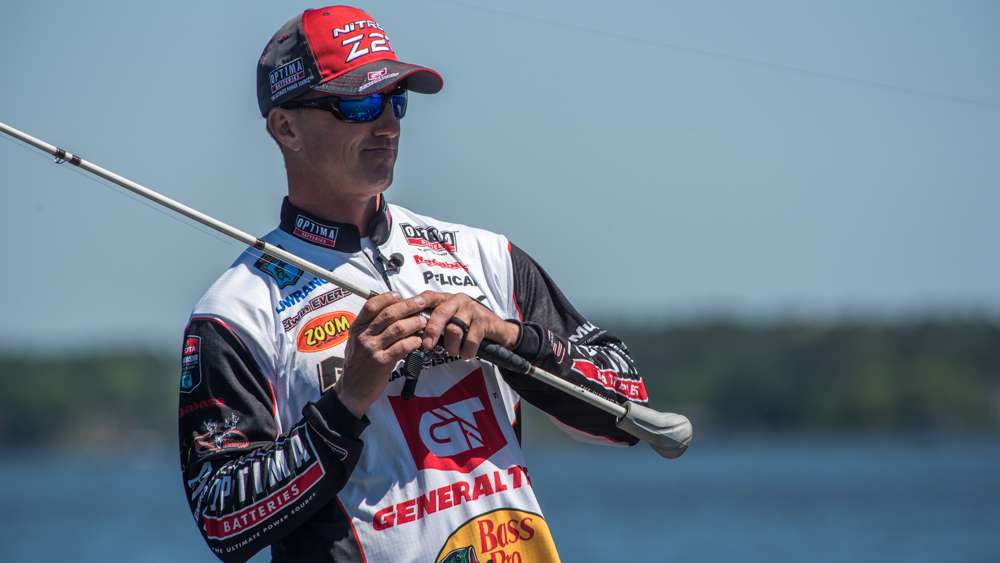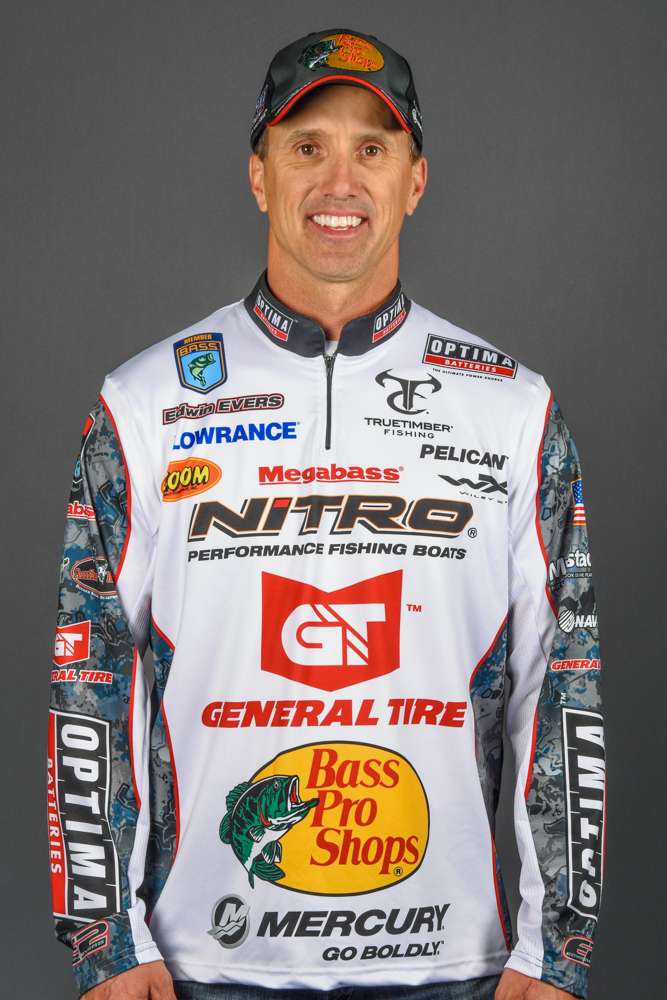
It’s time to start looking offshore for bass. In my experience, the bass will be at their absolute deepest right after the spawn. This includes the better fish — the ones that are the most fun to catch and the ones that win tournaments.
How deep? A lot depends on water clarity, but it’s certainly not unusual to find bass in 25 or 30 feet of water at this time. I usually focus my search on the 15- to 28-foot range.
Why so deep? I think the biggest reason is that the thermocline has not gotten established yet, so bass can go anywhere in the water column they want to go — they have oxygen in the shallows and in the depths. They’ll be wherever they can find food, structure and favorable temperatures. For a sizeable part of the bass population, that’s going to be very deep water.
After our stop at Wheeler Lake, I drove home and took most of the shallow water baits out of my boat and truck and replaced them with the tools I need to fish deep. Of course, I didn’t get rid of every spinnerbait, buzzbait or shallow crankbait, but I eliminated most of them because I think deep water is the way to go from here on out in the waters we’ll be fishing in the Elite Series.
It’s true that a lot of guys will continue to fish shallow, and some of them will do very well. That’s where they have confidence. But with so much fishing pressure and competition in the shallows, and so many bass in deeper water, it just makes sense for me to go deep and take my chances there. It’s where I think I can win.
Where to look for deep bass
The key to finding deep water bass over much of the country right now is to locate the areas where they just spawned and work your way out from there. I turn on my Lowrance HDS 12 and start looking around long points that run out to deep water or drop off into a creek or river channel.
A key here is that I idle around until I can see fish on the screen. I don’t cast until I know they are there. Occasionally, the fish I see on my sonar unit are not bass, but time spent with your electronics will help you learn the difference. Plus, you can always learn by catching one of them. White bass will often nip at a lure. If they’re catfish, you’ll see what looks like water droplets just hanging on your line above the lure; it’s actually catfish slime.
Some common mistakes
I see a lot of anglers start to fish a deep water point or drop without first seeing fish on their electronics. That’s a mistake that can cost you a lot of time. If you’re not seeing fish on your sonar unit, they’re probably not there and you’re fishing empty water. Instead of doing that, keep driving and looking.
Another common mistake is to fish on the bottom when the bass are actually suspended well above the bottom. You can see this on your electronics. It’s very common for bass to hold 8 or 12 feet above the bottom. If you choose a bottom-bumping lure to catch these fish, the only bites you’ll get are when the bait falls through the school and one grabs it. That’s a poor percentage approach.
Four favorites
A lot of baits can be great for post-spawn deep water fishing, but here are four of my favorites:
(1) Zoom Swimmer (shad) on a 3/4-ounce Mustad Elite Series Swimbait Darter Head. You can count it down to the level of the fish and bring it right through the school.
(2) 1/2-ounce E Series Gospel Jig (shad) from Andy’s Custom Bass Lures. This is a really versatile hair jig that you just swim through the water column like the Zoom Swimmer or let sink to the bottom and snap it back up sharply. After lifting it high, I kill it and expect the strike to come on the fall. I use it without a trailer.
(3) 3/4-ounce football jig (green pumpkin with matching trailer). This is a great choice when the bass really are on the bottom. My choice of trailer depends on how fast I want the bait to fall through the water column and how big I want its profile to be. On the large side, I’ll use a Zoom Brush Hog. If I want it to fall faster and hop it around more, I’ll use a Zoom Ultra Vibe Speed Craw.
(4) Megabass Deep-Six crankbait in a shad pattern. I can easily get this bait down to 16 or 17 feet.
Final tips
If you’ll keep your boat in shallow water and throw out to deeper water where you saw fish on your electronics, you’re more likely to keep your bait in the strike zone. Plus, it’s just easier to hit all the structure and cover when you’re fishing “uphill.”
Give deep water a try after the spawn, but don’t make a cast until you know they’re there.
Originally published in 2016.





